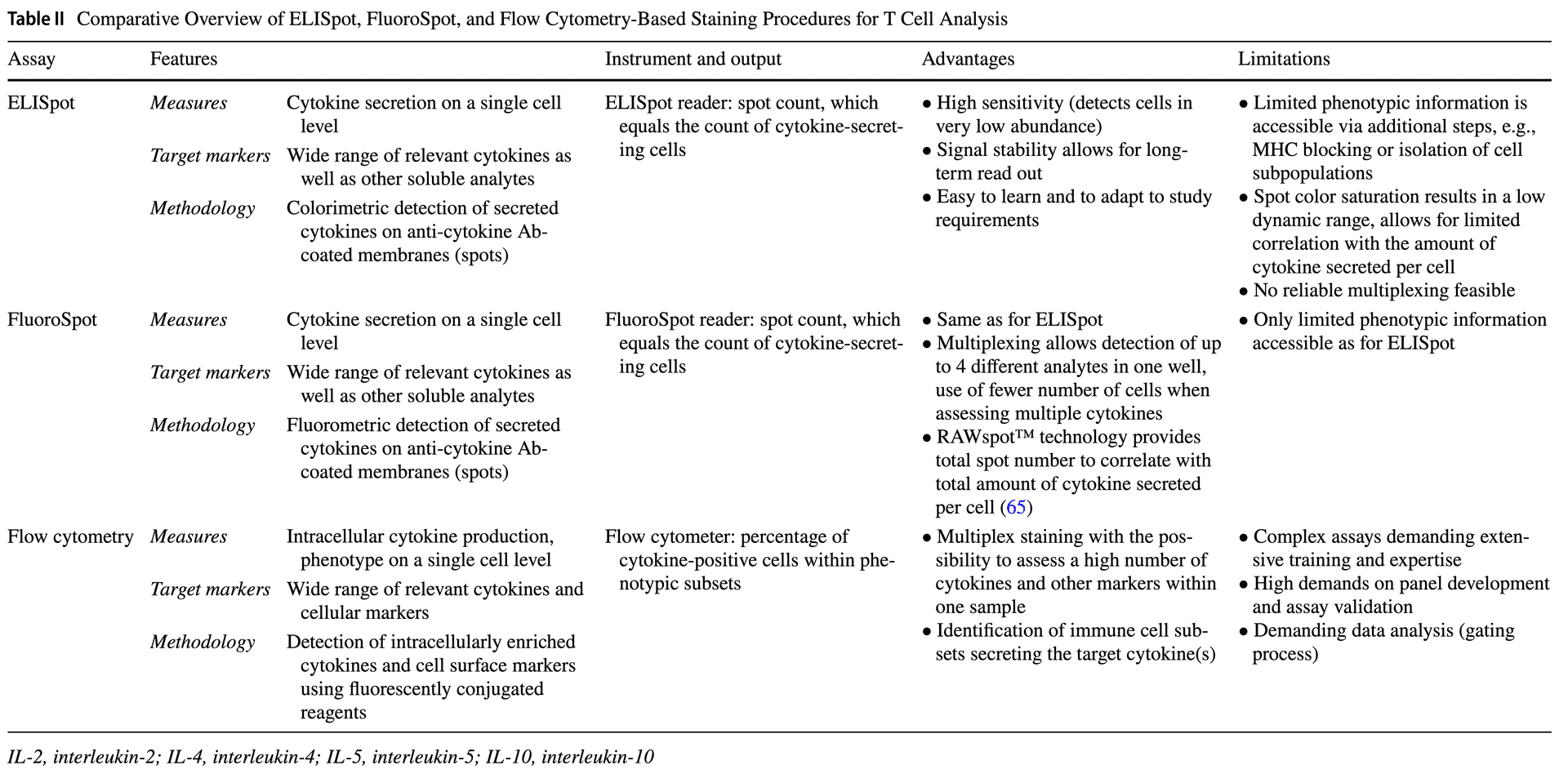
A comparison of ELISpot and FluoroSpot with flow cytometry methods
Published: January 24, 2024
Updated: June 7, 2024
3 minute read
Authored by: Tyler Sandberg
Over the years, the number of viral vector gene therapies has increased significantly. Adeno-associated virus vectors have become the preferred platform, and consequently, the measurement of pre-existing adenovirus immunity is particularly important during therapy evaluation. This review article, published in the AAPS Journal, offers recommendations and guidance for assessing adenovirus-specific cellular immune responses, emphasizing the valuable role of the ELISpot and FluoroSpot assays in these evaluations.
Gene therapy can be a powerful treatment for monogenic disorders. Most therapies introduce DNA into cells that compensate for mutated, poorly expressed, or even missing genes. This DNA is referred to as a transgene and it is often delivered to cells via vector transduction most commonly with an adeno-associated virus as the vector. Gene therapies have to take into consideration the immunogenicity of not only the viral carrier but also the transgene proteins that may be recognized as foreign by the body's immune system. This could lead to a cellular immune response that negatively impacts the safety as well as the efficacy of the therapy. So how should researchers assess cellular immunogenicity in the world of gene therapy? Let’s see what the authors of Evaluation of Cellular Immune Response to Adeno-Associated Virus-Based Gene Therapy had to say.
A schematic of how adeno-associated virus (AAV) gene therapies work. The transgene containing the missing or mutated gene, is delivered into cells using an AAV vector. This allows the targeted cells to produce the protein that was previously deficient or dysfunctional, potentially restoring normal function.
ELISpot, FluoroSpot, and flow cytometry assays are commonly used to assess cellular immunogenicity at a single-cell level by measuring a PBMC sample's ability to produce and secrete cytokines in response to antigen stimulation. ELISpot can detect one cytokine at a time, while FluoroSpot can detect up to 4 secreted analytes accurately. Flow cytometry-based assays can detect multiple cytokines as well with the added benefit of phenotyping the cells, but these methods require more advanced expertise as well as validation and are generally not as sensitive as ELISpot and FluoroSpot. Of these assays, ELISpot remains the most prevalent method utilized for cellular immunogenicity assessment. The reviewers described the advantages and limitations of each method as adapted in the following table:
Table 2 from the review article provides an overview as well as the advantages and limitations of ELISpot, FluoroSpot, and intracellular cytokine staining for assessment of antigen-specific T cell responses.
This table summary is not only applicable in assessing the immunogenicity of adeno-associated viruses in gene therapies but also in several areas of research. ELISpot and FluoroSpot are still considered the gold standard for the assessment of antigen-specific T cells and B cells in vaccine and infection research and are heavily used to evaluate the performance of novel immunotherapies.
We really enjoyed this review since it not only compared ELISpot and FluoroSpot with ICS and other flow cytometry methods, but also provided excellent guidelines as to how to design a study using the methods. It’s definitely worth the read to find out more about PBMC handling conditions, antigen choice, controls, and even assay qualification! The link to the article can be found at the end of this post.
Learn more about why ELISpot and FluoroSpot are key immunoassays to use in cell and gene therapy evaluation and get inspired!
Explore how others have utilized these sensitive assays by exploring our Publication database with over 5,000 publications where you can filter based on research area, methods, target analytes, and more! We’re always impressed by how scientists all over the world use Mabtech ELISpot and FluoroSpot assays to answer their specific research questions.


